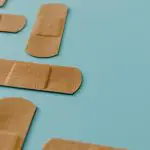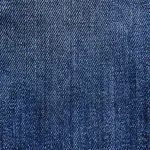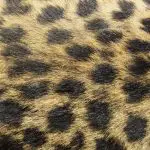Hey there, curious about using Downy fabric softener to remove wallpaper? Imagine it as a gentle yet powerful ally in your battle against stubborn wallpaper.
In this guide, we'll delve into whether this household staple can effectively tackle the task at hand. You're about to discover the ins and outs of using Downy fabric softener for wallpaper removal, including its benefits, step-by-step instructions, precautions, and tips for optimal results.
So, let's dive in and explore the potential of this unexpected solution for saying goodbye to old wallpaper.
Key Takeaways
- Downy fabric softener is gentle on wallpaper and helps preserve its integrity.
- It softens the adhesive underneath the wallpaper, making it easier to remove without leaving residue.
- Downy leaves a pleasant, fresh scent behind after wallpaper removal.
- Using Downy can save time and effort during the wallpaper removal process.
Understanding Downy Fabric Softener
To understand how Downy fabric softener can potentially remove wallpaper, you should explore its chemical composition and properties. Downy fabric softener is a popular product in laundry care, known for its ability to make clothes feel soft and smell fresh. Its main ingredients typically include water, biodegradable cationic surfactants, and a small amount of preservative.
These cationic surfactants are key to Downy's fabric softening capabilities. They work by reducing the static charge on fabrics, making them feel smoother and softer. When mixed with water, these surfactants form micelles that adhere to the fabric, providing a layer of softness.
In addition to softening fabrics, Downy also helps reduce wrinkles, prevent stretching, and decrease drying time. Its properties make it a versatile product for overall laundry care. However, when it comes to removing wallpaper, the surfactants in Downy could potentially break down the adhesive that binds the wallpaper to the wall.
This breakdown may make it easier to peel off the wallpaper, although it's important to test a small, inconspicuous area first to ensure it won't damage the wall surface.
Benefits of Using Downy for Wallpaper Removal
Using Downy fabric softener for wallpaper removal can offer several benefits due to its unique surfactant properties. When using Downy for wallpaper removal, you can experience the following benefits:
- Gentle on Wallpaper: Downy's fabric softening properties make it gentle on wallpaper, helping to preserve the integrity of the paper or vinyl during the removal process. This can be especially beneficial for delicate or older wallpapers that may tear or rip easily.
- Easy Residue Removal: Downy's surfactants work to soften the adhesive underneath the wallpaper, making it easier to remove without leaving behind stubborn residue. This can save you time and effort during the wallpaper removal process.
- Pleasant Scent: Unlike traditional wallpaper removal solutions, Downy fabric softener leaves a pleasant, fresh scent behind. This can make the wallpaper removal process more enjoyable and leave the room smelling nice once the wallpaper is removed.
Steps for Using Downy to Remove Wallpaper
Start by diluting the Downy fabric softener with water in a spray bottle. Use warm water and mix it with an equal part of Downy fabric softener, then shake well to ensure it's thoroughly mixed. Before applying the mixture to the wallpaper, it's important to prepare the room and the wallpaper itself. Here are some preparation tips to ensure the best results:
| Preparation Tips |
|---|
| 1. Lay down protective sheets to cover the floor and any nearby furniture. |
| 2. Remove any decorative items or wall hangings from the area. |
| 3. Ensure the room is well-ventilated by opening windows or using fans. |
| 4. Test a small, inconspicuous area of the wallpaper to ensure it reacts well to the Downy mixture. |
Once the preparation is done, it's time to apply the Downy mixture to the wallpaper using the following techniques:
| Application Technique |
|---|
| 1. Lightly spray the Downy mixture onto the wallpaper, ensuring it's evenly distributed. |
| 2. Allow the mixture to soak into the wallpaper for about 15 minutes. |
| 3. Use a wallpaper scraper or putty knife to gently lift the edges of the wallpaper. |
| 4. Slowly peel away the wallpaper, spraying more Downy mixture as needed to loosen stubborn areas. |
Following these steps for preparation and application will help you effectively use Downy fabric softener to remove wallpaper.
Precautions When Using Downy on Wallpaper
Before applying Downy fabric softener to remove wallpaper, it's important to take a few precautions.
Protect the integrity of your walls by ensuring they're properly sealed and in good condition.
Test the fabric softener on a small, inconspicuous area first to make sure it doesn't damage the wallpaper or the wall underneath.
Protecting Wall Integrity
How can you ensure that Downy fabric softener effectively removes wallpaper without damaging the wall integrity? Follow these precautions to protect and preserve the wall integrity:
- Moisture Control: Before applying Downy fabric softener, ensure proper moisture control in the room. Excessive moisture can seep into the wall and cause damage. Use a dehumidifier or open windows to maintain optimal humidity levels.
- Surface Protection: Safeguard the underlying wall surface by applying a primer or sealant. This additional layer will help protect the wall from potential damage caused by the fabric softener.
- Gentle Application: When using Downy fabric softener, apply it gently and avoid excessive soaking. Use a spray bottle to mist the wallpaper and allow the solution to penetrate without oversaturating the surface.
Testing on Small Area
To ensure the safe and effective use of Downy fabric softener on wallpaper, it's essential to conduct a small test in an inconspicuous area. This test will help you assess the effectiveness of Downy in removing the wallpaper and identify any potential damage it may cause.
Start by diluting the Downy fabric softener with water as per the recommended ratio and apply it to a small, hidden section of the wallpaper. Allow it to sit for the specified time, then gently attempt to peel off the wallpaper.
After removal, inspect the wallpaper and the wall surface for any signs of damage. If the test area shows no adverse effects and the wallpaper peels off easily, you can proceed with confidence, knowing that Downy is safe and effective for use on your wallpaper.
Tips for Maximizing Downy's Effectiveness
You can maximize Downy's effectiveness by diluting it with warm water before applying it to the wallpaper. Proper dilution ratios are crucial to ensure that Downy effectively penetrates the wallpaper and loosens the adhesive.
Follow these tips to make the most of Downy fabric softener for wallpaper removal:
- Dilution Ratio: Mix one part Downy fabric softener with three parts warm water in a large bucket or spray bottle. This ratio ensures that the fabric softener is potent enough to dissolve the wallpaper adhesive without being too concentrated.
- Application Technique: Use a sponge or a paint roller to apply the diluted Downy mixture generously onto the wallpaper. Ensure that the wallpaper is thoroughly saturated but not dripping.
- Dwell Time: Allow the diluted Downy fabric softener to sit on the wallpaper for at least 15-20 minutes to effectively penetrate and loosen the adhesive. This dwell time gives the fabric softener enough opportunity to work its magic before you start scraping off the wallpaper.
Alternative Wallpaper Removal Methods
Looking for other ways to remove wallpaper?
Try the steam and scrape method for a quick and effective solution.
Or mix up a vinegar and water solution to tackle the wallpaper adhesive.
For a gentler approach, consider using fabric softener to help loosen the wallpaper.
Steam and Scrape Method
When removing wallpaper, consider using the steam and scrape method as a gentle and effective alternative. This technique involves applying steam to the wallpaper to loosen the adhesive, making it easier to scrape off. Here's how to do it:
- Steam application: Use a wallpaper steamer or a rented steamer to apply steam to the wallpaper, starting from the top of the wall and working your way down. The steam will penetrate the wallpaper and soften the adhesive, making it easier to remove.
- Scraping technique: Once the wallpaper is steamed, use a wallpaper scraper or putty knife to gently scrape off the softened wallpaper. Be careful not to damage the wall underneath, and work in small sections for best results.
- Repeat if necessary: Depending on the type of wallpaper and adhesive, you may need to repeat the steaming and scraping process to fully remove the wallpaper.
Vinegar and Water Solution
For an alternative wallpaper removal method, start by mixing equal parts of vinegar and water in a spray bottle. This vinegar and water solution can be sprayed onto the wallpaper, allowing it to saturate for a few minutes. The acidity of the vinegar helps to break down the wallpaper paste, making it easier to remove.
Once the solution has had time to work its magic, use a scraper to gently peel off the wallpaper. This method is cost-effective and environmentally friendly. However, it may not be as effective for stubborn or multiple layers of wallpaper.
If you find this method challenging, or if the wallpaper is particularly stubborn, you may want to consider professional removal services for a quicker and more thorough solution.
Fabric Softener Technique
If you're struggling to remove stubborn wallpaper, try using Downy fabric softener as an alternative method.
Here are three fabric softener alternatives for removing stubborn wallpaper:
- Fabric Softener and Water Solution: Mix equal parts of fabric softener and hot water in a spray bottle. Liberally spray the solution onto the wallpaper and let it sit for a few minutes. The fabric softener helps to loosen the adhesive, making it easier to peel off the wallpaper.
- Fabric Softener and Vinegar Mixture: Combine fabric softener with white vinegar for a potent wallpaper removal solution. The combination of these two agents can effectively break down the adhesive, making the wallpaper easier to remove.
- Fabric Softener and Steamer: Use a wallpaper steamer in combination with fabric softener. Apply the fabric softener solution to the wallpaper, then use the steamer to further loosen the adhesive for easier removal.
Frequently Asked Questions
Can Downy Fabric Softener Be Used on All Types of Wallpaper, Including Vinyl or Textured Wallpaper?
Yes, you can use Downy fabric softener on all types of wallpaper, including vinyl and textured wallpaper. It's effective for removing painted wallpaper. However, be mindful of environmental concerns and take safety precautions when using it.
Will Using Downy Fabric Softener on Wallpaper Affect the Paint or Drywall Underneath?
Using Downy fabric softener on wallpaper can affect the paint and may not be safe for drywall underneath. It's essential to test a small area first and proceed with caution to avoid damaging the paint or compromising drywall integrity.
How Long Should Downy Fabric Softener Be Left on the Wallpaper Before Attempting to Remove It?
To apply Downy fabric softener on wallpaper, saturate it and let it sit for 15-30 minutes. Best practices include scoring the wallpaper before application for better penetration. Then, start removing it with a scraper.
Can Downy Fabric Softener Be Used to Remove Wallpaper That Has Been Painted Over?
To remove painted wallpaper, you can use Downy fabric softener, but it has drawbacks. It's effective but may require multiple applications. Alternative methods like steaming or using a wallpaper scoring tool are also worth considering.
Are There Any Specific Environmental or Safety Concerns When Using Downy Fabric Softener for Wallpaper Removal?
When using Downy fabric softener for wallpaper removal, it's important to consider environmental impact and safety precautions. Always ventilate the area, wear gloves, and dispose of materials properly to minimize environmental impact and ensure safety.
- How Does Ring Spun Cotton Affect Garment Fit and Shape Retention? - August 13, 2024
- What Are the Challenges in Producing Ring Spun Cotton? - August 13, 2024
- Is Ring Spun Cotton Suitable for Plus-Size Clothing? - August 13, 2024






